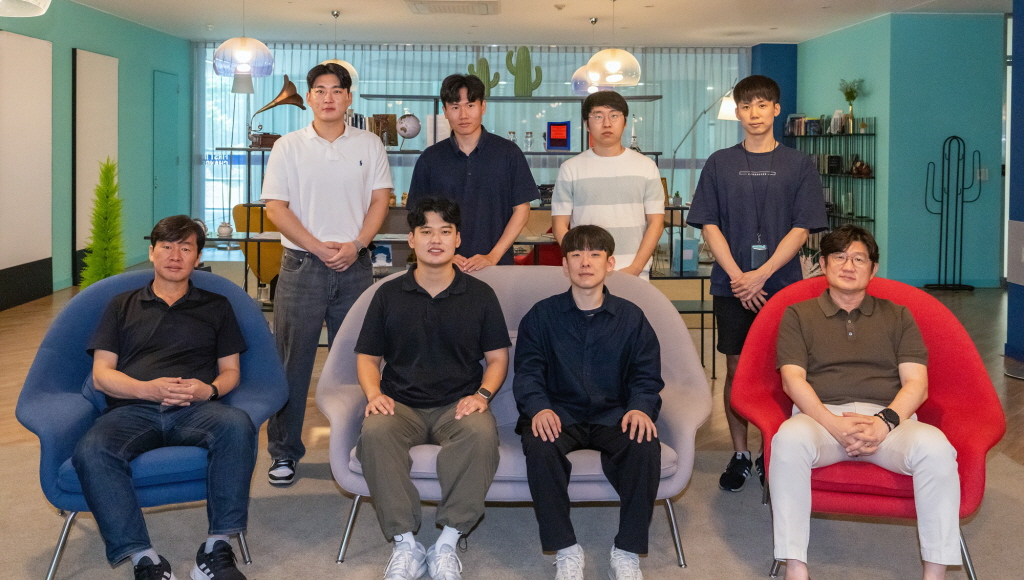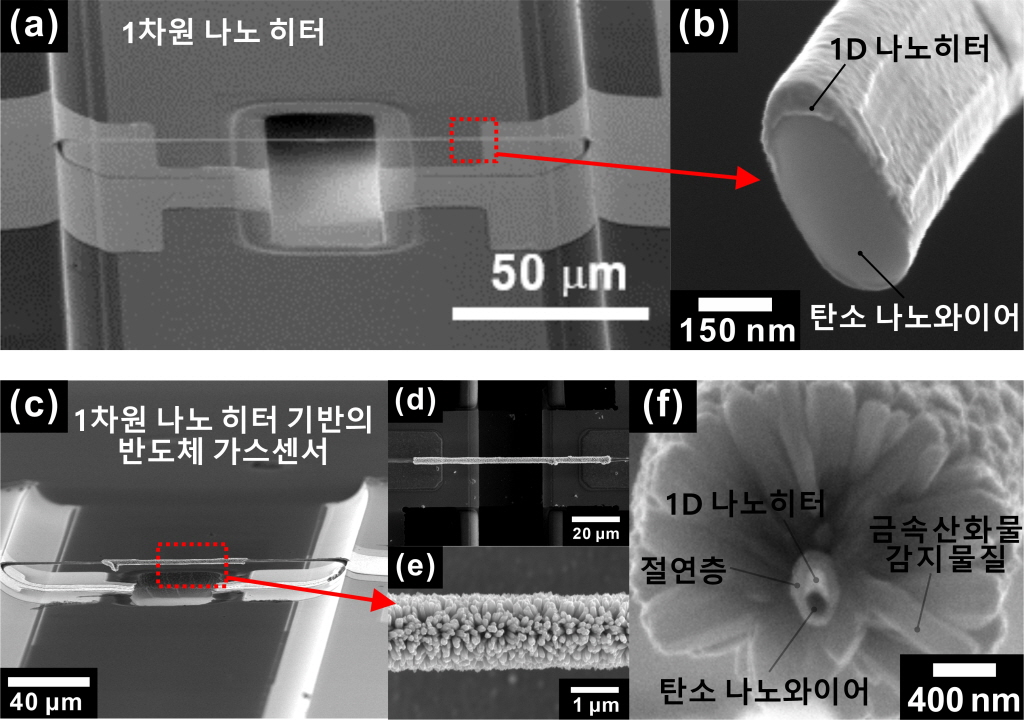UNIST(총장 박종래) 기계공학과 신흥주 교수팀과 전기전자공학과 김재준 교수팀이 나노공정과 딥러닝 기술을 결합해 가스의 종류와 농도를 정밀하게 측정할 수 있는 전자코를 성공적으로 구현하며, 향후 공기질 모니터링, 건강 진단, 식품 안전, 환경 보호 등 다양한 분야에서 활용될 것으로 기대된다.

▲(왼쪽부터)김재준 교수, 김용기 연구원, 김태중 연구원, 신흥주 교수 등 UNIST 연구진
UNIST, 나노공정·딥러닝 융합 가스 정밀 측정
나노기술과 인공지능(AI) 딥러닝을 융합해 정밀하면서도 초저전력으로 작동하는 가스 센서가 개발돼 향후 공기질 모니터링, 건강 진단, 식품 안전, 환경 보호 등 다양한 분야에서 활용될 것으로 기대된다.
UNIST(총장 박종래) 기계공학과 신흥주 교수팀과 전기전자공학과 김재준 교수팀은 나노공정과 딥러닝 기술을 결합해 가스의 종류와 농도를 정밀하게 측정할 수 있는 전자코를 성공적으로 구현했다고 13일 밝혔다.
이번에 개발된 전자코는 나노 크기의 히터 기반 반도체 가스 센서를 사용한다. 일반적인 센서가 높은 작동 온도로 인해 많은 전력을 소모하는 반면, 이 센서는 200마이크로와트 이하 전력으로도 작동 가능하다. 모바일과 IoT 장치에 적합하며, 반도체 공정을 기반으로 센서를 제작해 생산성도 높다.
센서 소형화를 통해 기존 전자코의 높은 전력 소모를 줄였다. 듀티 사이클링 기술을 도입해 전력 소모를 추가로 90%까지 감소시켰다. 듀티 사이클링은 전력을 주기적으로 공급하고 차단해 에너지 사용을 최소화하는 기술이다.
나노 크기의 히터는 10만 분의 1초 만에 섭씨 250도까지 순간 가열과 상온으로의 냉각이 가능해 짧은 듀티사이클에서도 원활한 가스 측정이 가능하다.
연구팀은 여러 센서가 필요하던 기존 전자코 구조를 단일 센서로도 작동하도록 개선했다. 반도체 표면의 흡착된 가스 탈착은 나노히터의 작동 속도에 비해 느리다. 이 때문에 빠르게 반복되는 듀티 사이클링에서는 히터가 냉각되는 짧은 시간 동안에도 가스 반응이 지속된다. 따라서 히터 작동과 중단 동안 서로 다른 신호를 수집할 수 있다. 이러한 이중 신호를 합성곱 신경망(CNN)으로 실시간 분석해 다양한 가스의 종류와 농도를 정확히 식별할 수 있게 됐다.
신흥주 교수는 “기존 전자코의 한계를 단일 센서로 해결할 수 있게 됐다”며 “소형화가 필수적인 모바일 및 IoT 장치에 쉽게 적용할 수 있다”고 밝혔다.
김재준 교수는 “저전력으로 동작하는 초소형 가스 측정 장치를 구현할 수 있어, 실시간 무선 모니터링 시스템 등 다양한 응용 분야에서 활용될 수 있을 것”이라고 설명했다.
연구 결과는 나노기술 전문학술지 스몰(Small)과 국제학술지 ACS 센서즈(ACS Sensors)에 게재됐다. 나노히터 기반 가스 센서는 2022년 9월에 실렸으며, 전자코 기술은 2024년 6월에 발표돼 각각 표지 논문으로 선정됐다. 연구는 과학기술정보통신교육부 한국연구재단(NRF), 산업통상자원부, 과학기술정보통신부의 지원을 받았다.

▲1차원 나노 히터 기반의 반도체 가스센서의 전자 주사 현미경 사진

